Perhaps the most memorable part of my New York trip was spending two days with the descendants of Fred and Jimmy Hager. On the second day of this trip, I spent the morning searching around the Bowery and Greenwich village for historical locations, but when the afternoon came, took the 7 train all the way out to the Mets field, where I was to meet up with Don and his sister in law Cheryl.
The night I got in, Cheryl so kindly drove me from the airport to the historic building I was staying for the night, which at one time was a childhood home of Frank P. and John Banta. For months I had communicated with Don, getting to know him and his family, as well as what history he remembers.
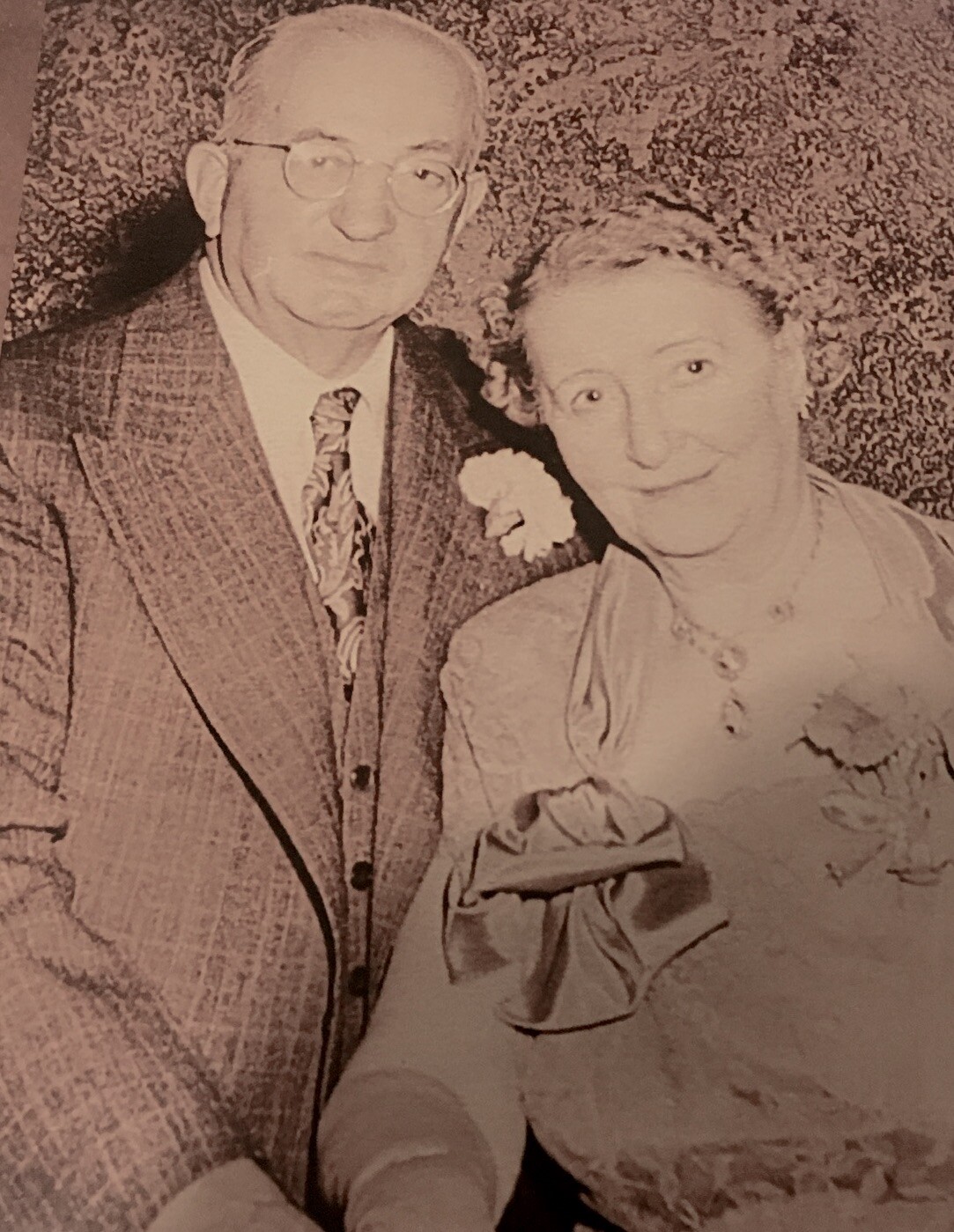
Just a little background, Jimmy was Don’s maternal grandfather, so that made Fred his great uncle. Jimmy and his wife Isabella had two children, Melvin and Evelyn (in addition to two who died in childhood). Melvin died in 1943, and the year after that, Evelyn had Don. So without his actual uncle around, Don knew Fred as “Uncle Fred.”
So with all this knowledge, it made our actual meeting unusually familiar. After waiting for a bit at the rather barren Mets field stop, I got in the car with Don and Cheryl, so then the fun began. We had planned that on this day we would head out to the Bronx to see what locations we could spot, and see the park where his grandfather and uncle played 120 years ago.
After a little while of bickering over directions, and some mobile sightseeing, we made it out to St. Mary’s park. This lovely little patch of green is rather unassuming to most, but has retained its charm since the latter 19th century. It’s not nearly as big as some of the other famous New York parks, but its history is just as interesting. Cheryl decided not to tag along with us, so she stayed in the car as Don and I trekked out into the green, looking for the famous big rocks I had seen in period photographs, and for the circle where the band once played.
After taking some pictures on the rocks, we found the band venue. It is now an open concert venue, newly redone in the last decade. It is quite touching to know that this space was reverted to its original purpose. Then we searched around for what looked like the oldest tree, one that was certainly present to hear Hager’s band play back in 1898 to 1901. Don is a very social and personable character, willing to strike up a conversation with anyone around, so he was eager to tell folks at the park about the history here. I am much shyer around people, generally not approaching anyone else, so this did help us to get things done.
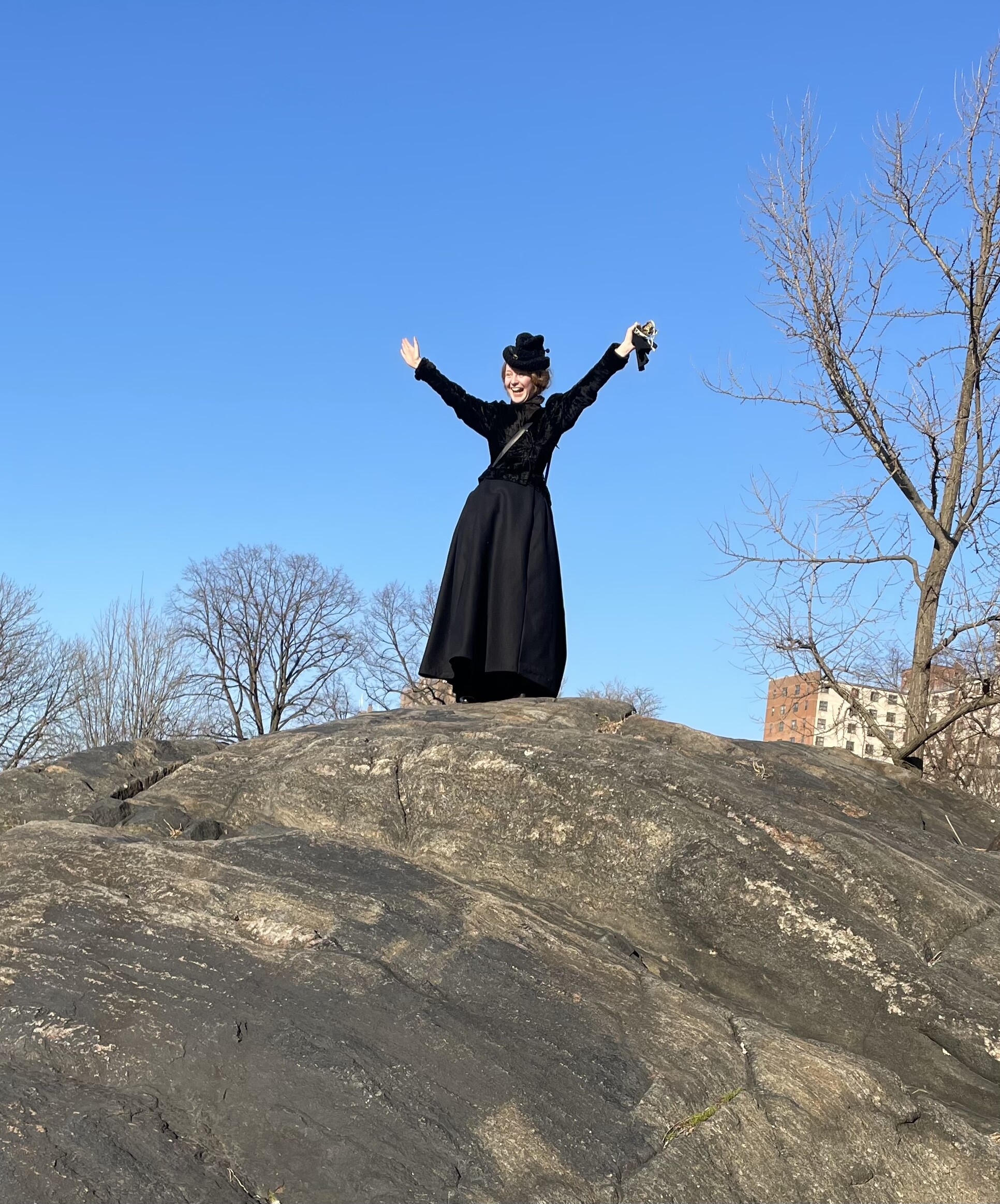
We eventually gained access into the recreation building at the park and spoke with the manager about the history here. Throughout the entirety of this trip I had Hager’s scrapbook on me at all times, just to be appropriately overprotective of it. I had even bought a purse the right size solely to be able to carry it. I pulled out the scrapbook before the manager, and he was quite impressed, and unfamiliar with the history in front of him. Very little records of this park went back nearly as far as the programs that Don’s “uncle Fred” had placed within these notebook pages. Perhaps one day some of these fascinating programs will be accessible to the citizens of the south Bronx, as they once were.
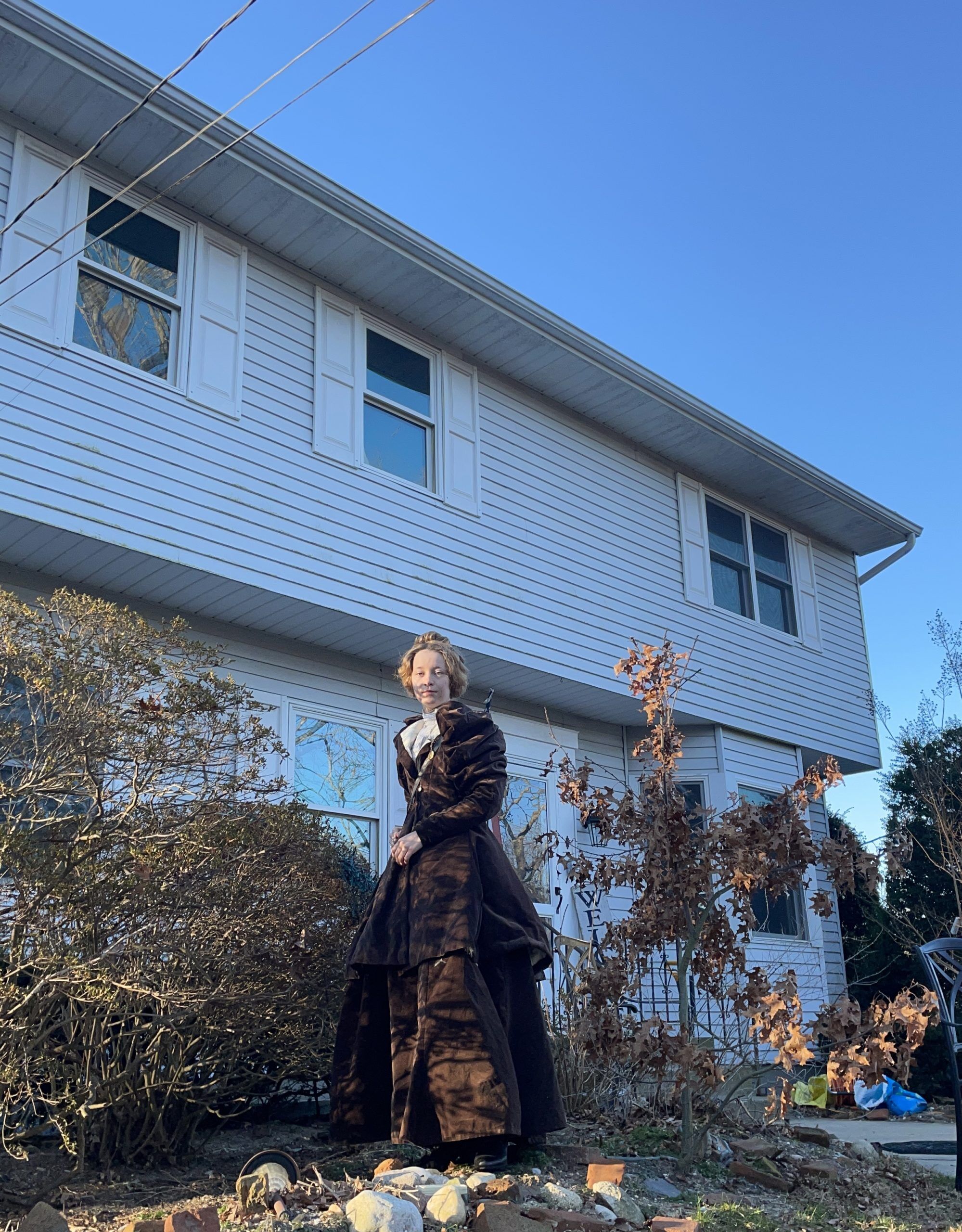
By this time it was starting to get dark, so we drove back out to Flushing to spot some more historical locations, including the house where Jimmy and Isabella lived before the depression. By the time we had spotted a few more places, including the harbor where Fred’s first high tech boat blew up in 1922, we went and had dinner at a nice diner. By then we were all exhausted, so they took me back to where I was staying. As much excitement as this day was, this was only one day of plans we had sorted out.
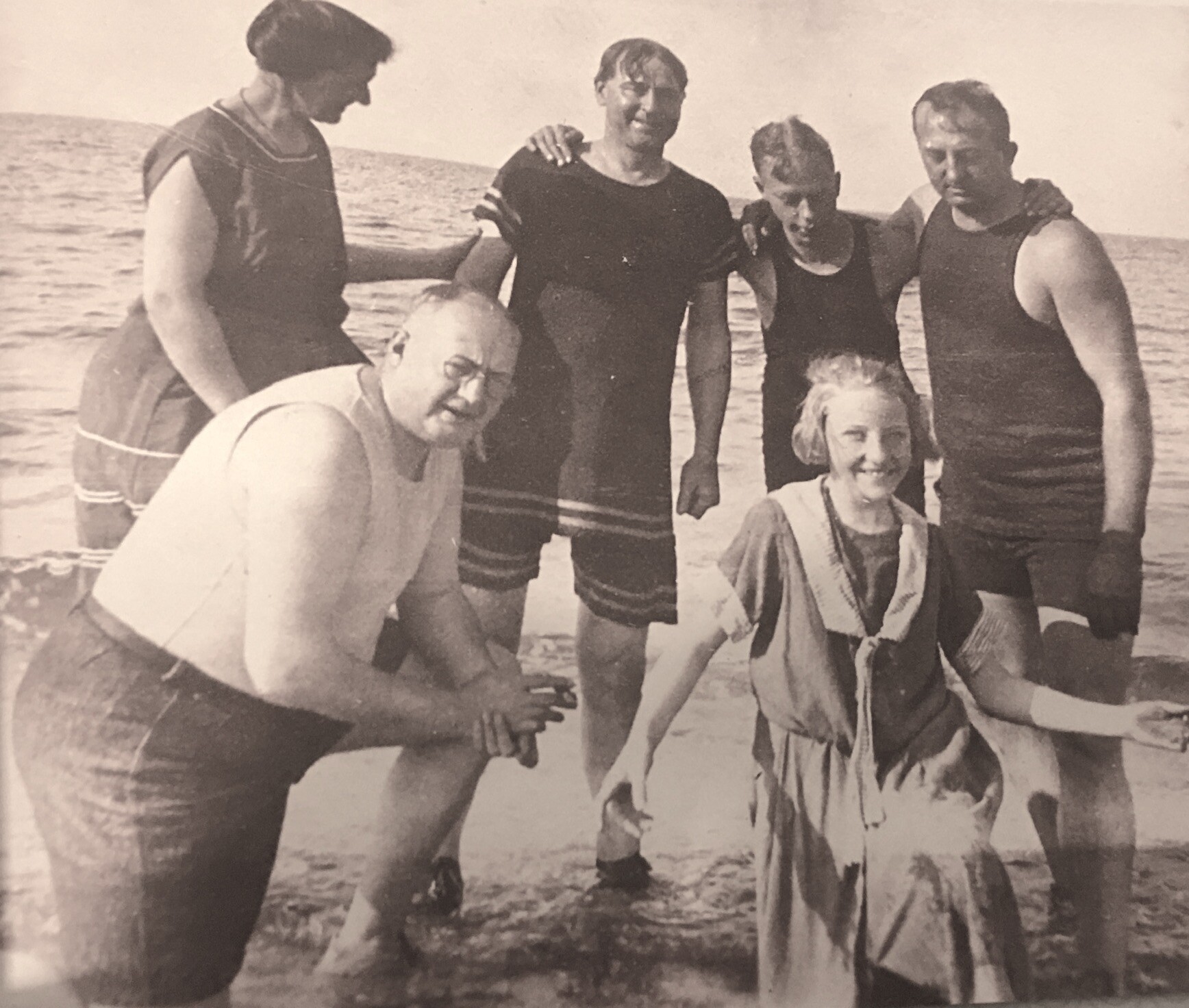
Th0e next morning I got up early, grabbed some breakfast, and trotted through throngs of Broadway-goers in Times Square to catch the train to Ronkonkoma from Penn Station. To my surprise, a few Broadway shows had just opened for the first time in two years on this very day, so the streets were mobbed in Times Square, more than they had been in quite awhile. I barely made it to the train I intended to catch, almost missing it by a minute. So then I could rest easy for the nearly two-hour ride to the middle of Long Island.
When I got there, the weather was clear and crisp, but was slightly disagreeable. In the typical Long Island fashion, it was very cold and blustery. Don picked me up later and we drove around to see the historic sights of Ronkonkoma and the town he lives in, Medford. We saw the lake, which is the largest out on the island, and looked around at the local attractions, including the 300 acres of forest lands that surround Medford. Don, being active in local civics, helped preserve these lands. Medford is a relatively small town, so there really must not have been much when Jimmy Hager moved out there.
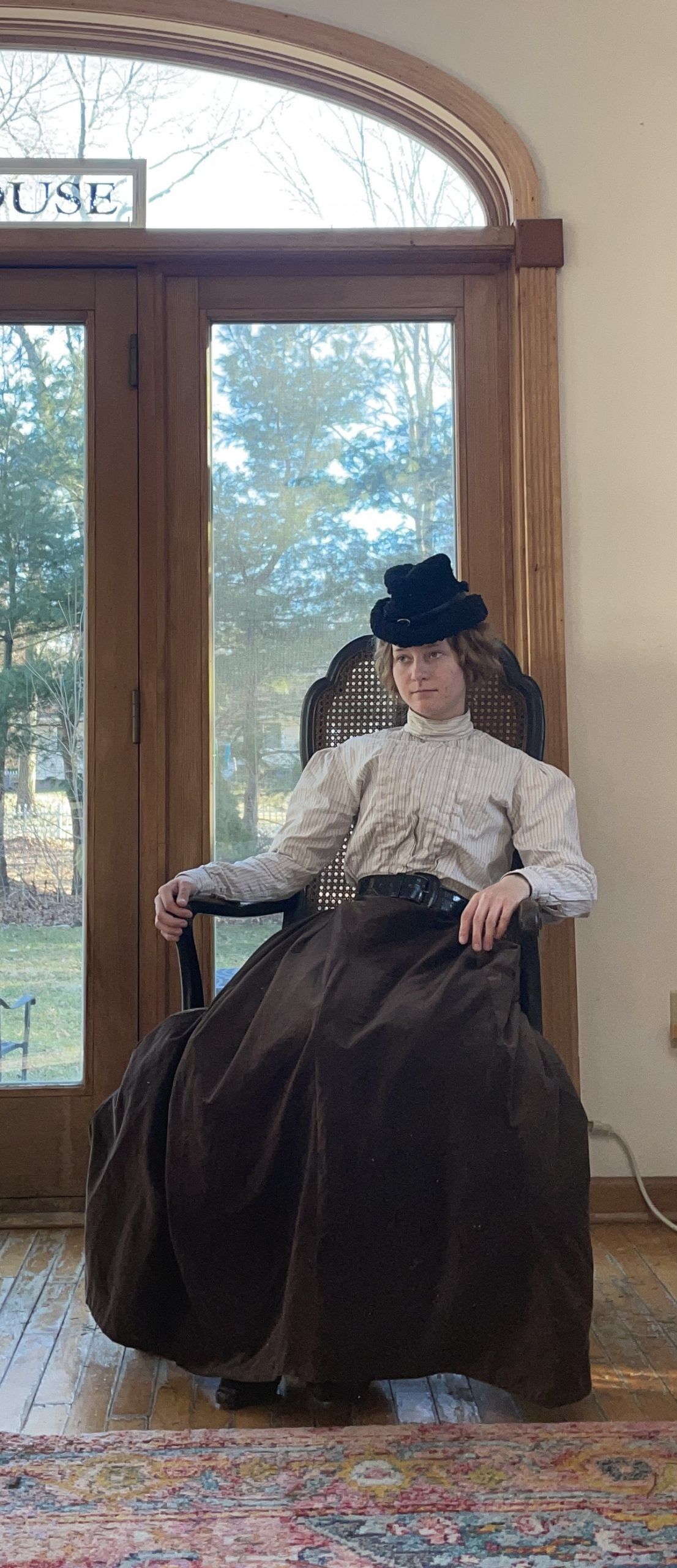
Jimmy retired around the end of World War II, and from there he decided to move out to Medford, taking all his leftover percussion equipment with him. They bought a three room house there, as they had lived on a meager income since the depression hit. Jimmy and Isabella quite liked it there, and it soon became the spot for most Hager family gatherings, and as Jimmy got older, these gatherings are what Don remembered most about his grandfather and great-uncle.
He doesn’t explicitly remember any tension between Granddad Jim and Uncle Fred, but even at his young age, he could sense something was a little bit off between them and the two sides of the family. Fred had alienated his daughters, and didn’t much like sharing his massive royalty money with others, so it is likely that this was part of any abrasive words spoken at these holidays. He remembers Fred as being a very insistent character, always very well dressed, and still hustling his music and arrangements with the musicians’ union friends he had, well into the 1950s.
Conversely, Jimmy was very quiet and reserved, with great modesty and kindness, an ideal grandfather type, even with his eventful past. Jimmy almost never drank, but like most people trying to be classy as the rich folk of the time, he kept a nice bottle of brandy or port, with a few nice glasses, upon the insistence of Isabella. We can assume that Fred enjoyed more of this bottle than Jimmy when they came around. One of these glasses still survives.
Later in life, Jimmy unfortunately had Alzheimer’s, so the last decade of his life was rather tragic. With this creeping up on him, he decided it was best to sell off his percussion equipment. There were likely records as well, but unsurprisingly Jimmy didn’t keep piles of his own records like Fred. Don remembers playing with many of these pieces as a child, and especially the marimba that took up so much space in the basement. He kept a few odds and ends, but Isabella sold off most of it, and when Fred died, they kept what remained of his material in the basement as well, including lots of records.
All of these stories were suddenly brought to life when we stepped into the house. Don and I started by going through a few trunks of papers to see what we could find, but unfortunately nothing we found dated nearly as far back as Jimmy and Fred’s lifetime. Even with the slight sting of disappointment, I did get to handle the few relics of Jimmy’s that survive. These include a few items of furniture, a single drum frame, and a woolen baseball shirt that he wore around the late 1910s. It was truly a lovely relic to behold, even with it being nibbled in spots by moths. Jimmy was also a very good baseball player, supposedly good enough to have been approached by major leagues, but like every big time job he was offered, he refused, preferring a modest life.
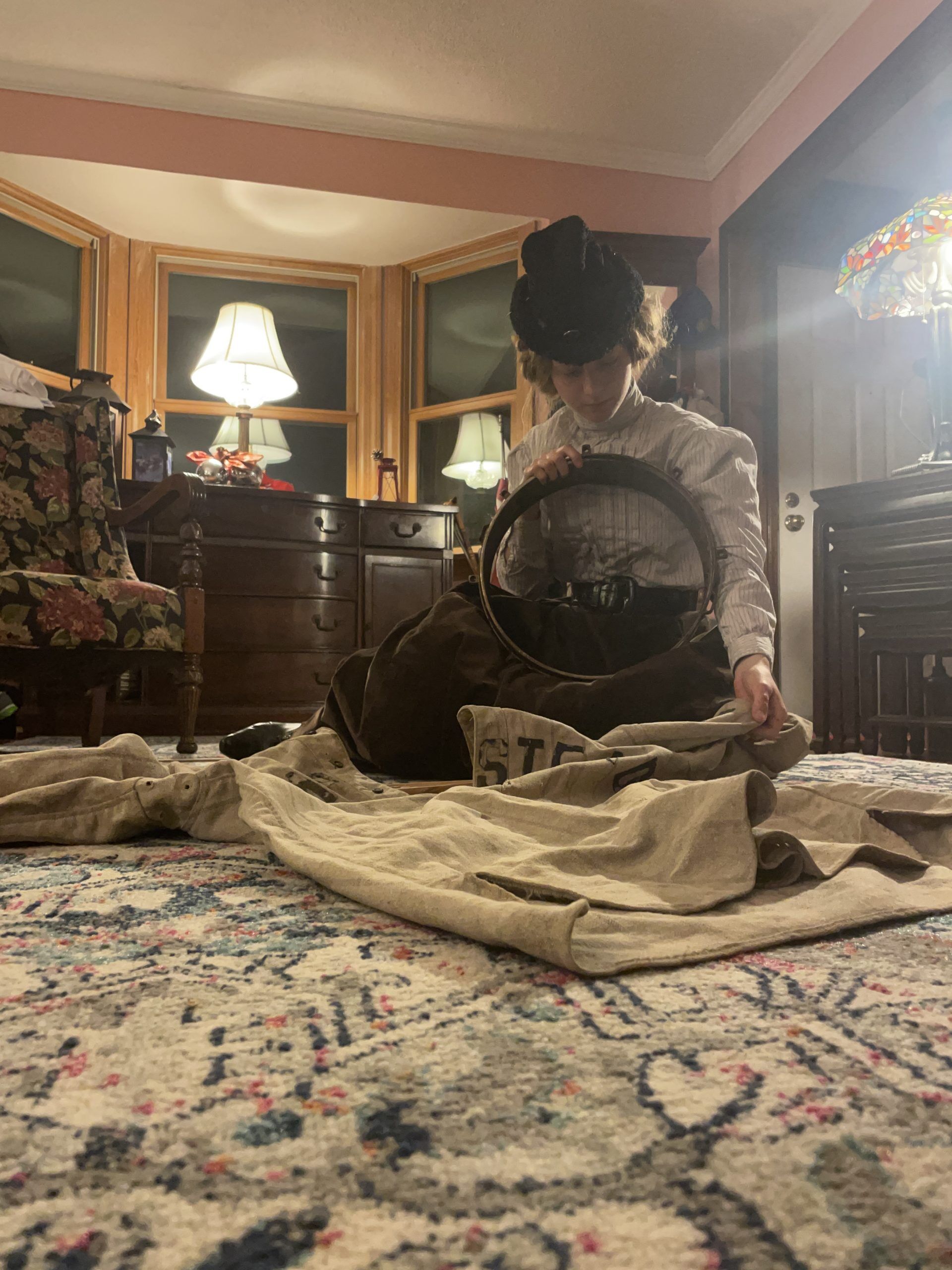
When Jimmy died in 1961, Don inherited the house, and he stayed here with his family as it grew, and so he lives here now with his daughter. The house was added to, as three rooms wasn’t quite enough for the family, but much of the atmosphere that existed when Jimmy and Fred were around still remains.
After hours of sifting through photographs, and discussing the detailed and complicated history of granddad Jim and “Uncle Fred,” we went to dinner with Don’s daughter in law Karen at a local dive in Patchogue. It was here where we got to really joke around about the curious life of “Uncle Fred,” and I told Don the more outrageous stories that surrounded him. Surely there wasn’t a more Long Island experience than being at this bar, sitting in the back room. Being waited on by a good crusty waitress, and enjoying conversation with locals and even some tourists from Colorado.
After that I had assumed I needed to get to the train station to head back into the city, but Don and his daughter very kindly allowed me a place to stay for the night, before I had to get up early the next day to get back into town. I hadn’t any extra clothing, so I slept in my chemise and drawers. It was quite an odd experience for me, staying in a very nice comfy bed in the very house where such gatherings of Hagers had happened more than half a century before. Here Jimmy Hager lived for about a decade, watched and enjoyed the Lawrence Welk Show, occasionally pitched baseballs to his grandkids, furrowed at Fred, listened to baseball games on the radio, cared for his grandchildren, and just lived the best life he could even with Alzheimer’s.
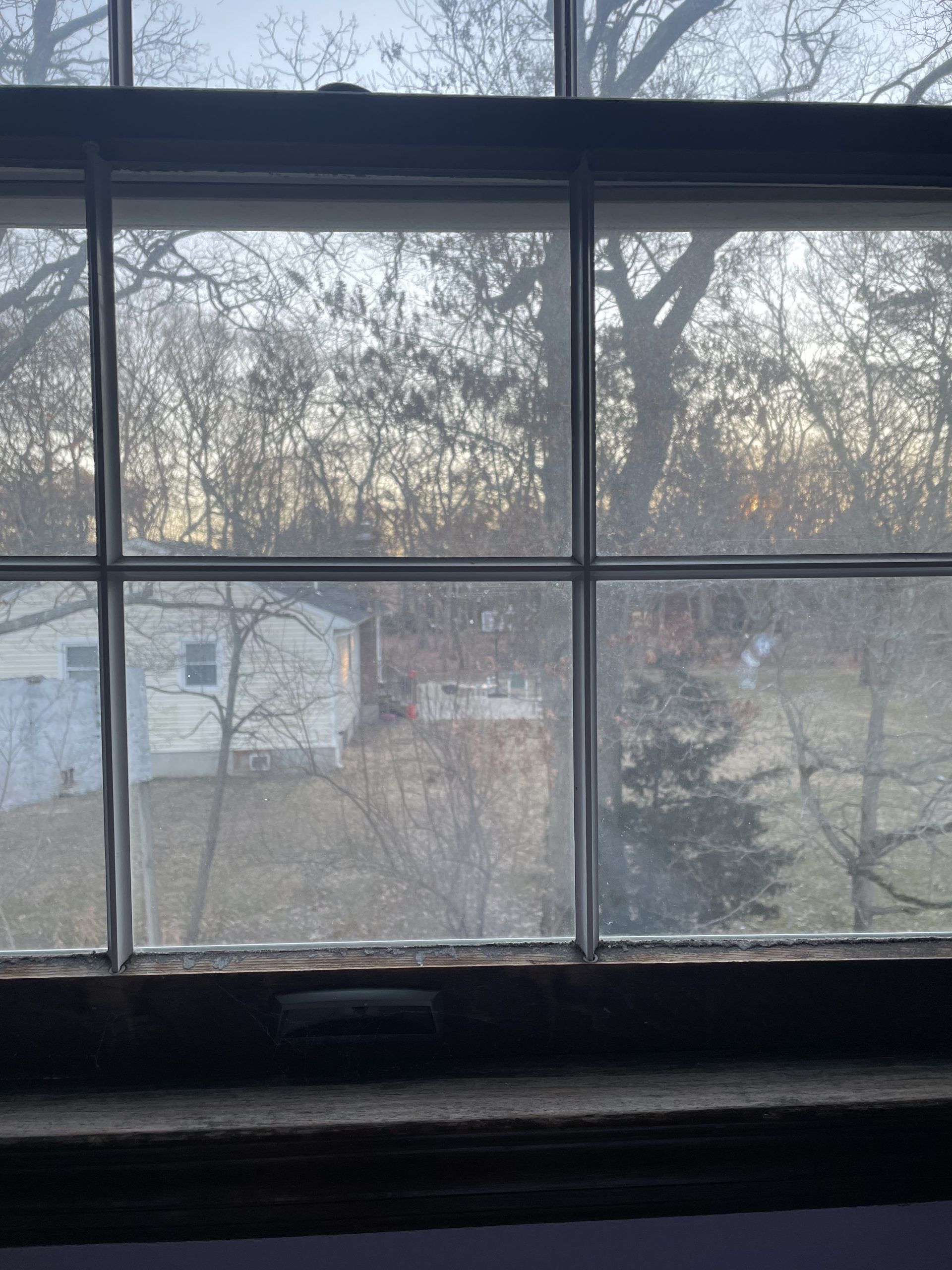
I went to bed late and had to get up early unfortunately, but the morning was beautiful and crisp. There’s nothing quite like waking up in a historic house, looking out the window, seeing frost bitten trees, and hearing distant bird calls. Even if my day was going to be long, the morning couldn’t have been more peaceful. It is surely a moment I will cherish the rest of my life.
I cannot thank Don Seubert enough for his kindness and hospitality, these adventures will surely be important to me as long as I remember them. I hope that they were just as interesting to read to you as they were to write and recall.
R. S. Baker has appeared at several Ragtime festivals as a pianist and lecturer. Her particular interest lies in the brown wax cylinder era of the recording industry, and in the study of the earliest studio pianists, such as Fred Hylands, Frank P. Banta, and Frederick W. Hager.






















